Alsace is one of the most picturesque of all wine growing areas along the Rhine, with its fairy-tale walled towns, winding narrow streets and half-timbered houses. You can enjoy tasting some of the region’s wines by following the Alsace Wine Route.
We took an excursion with Lüftner Cruises that combined European history and Alsace wines, in our visit to a family owned vineyard. Our coach passed row after row of carefully tended vines on its way from the walled town of Obernai to the village of Barr.
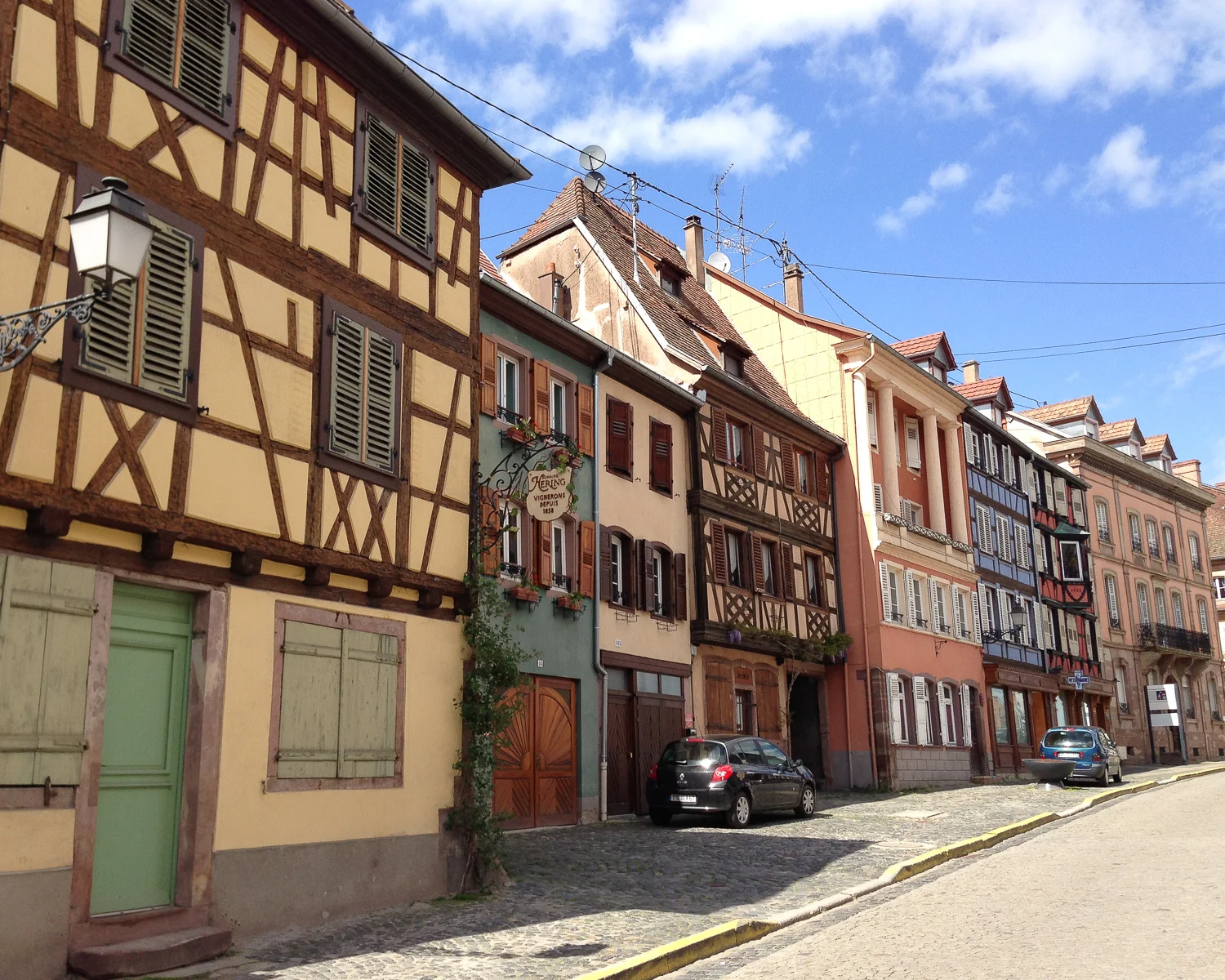
Wine Tasting on the Alsace Wine Route
For over 2,000 years the Rhine has been Europe’s most important waterway and trade route, with viniculture playing a major role ever since this region was an outpost of the Roman empire.
Alsace is situated on France’s most easterly border gazing towards Germany, and in the Middle Ages was thought to be the source of the famous ‘Rhenish’ wines. The imposing buildings and beautiful towns built in this period are testament to the wealth of the region built on the wine trade.
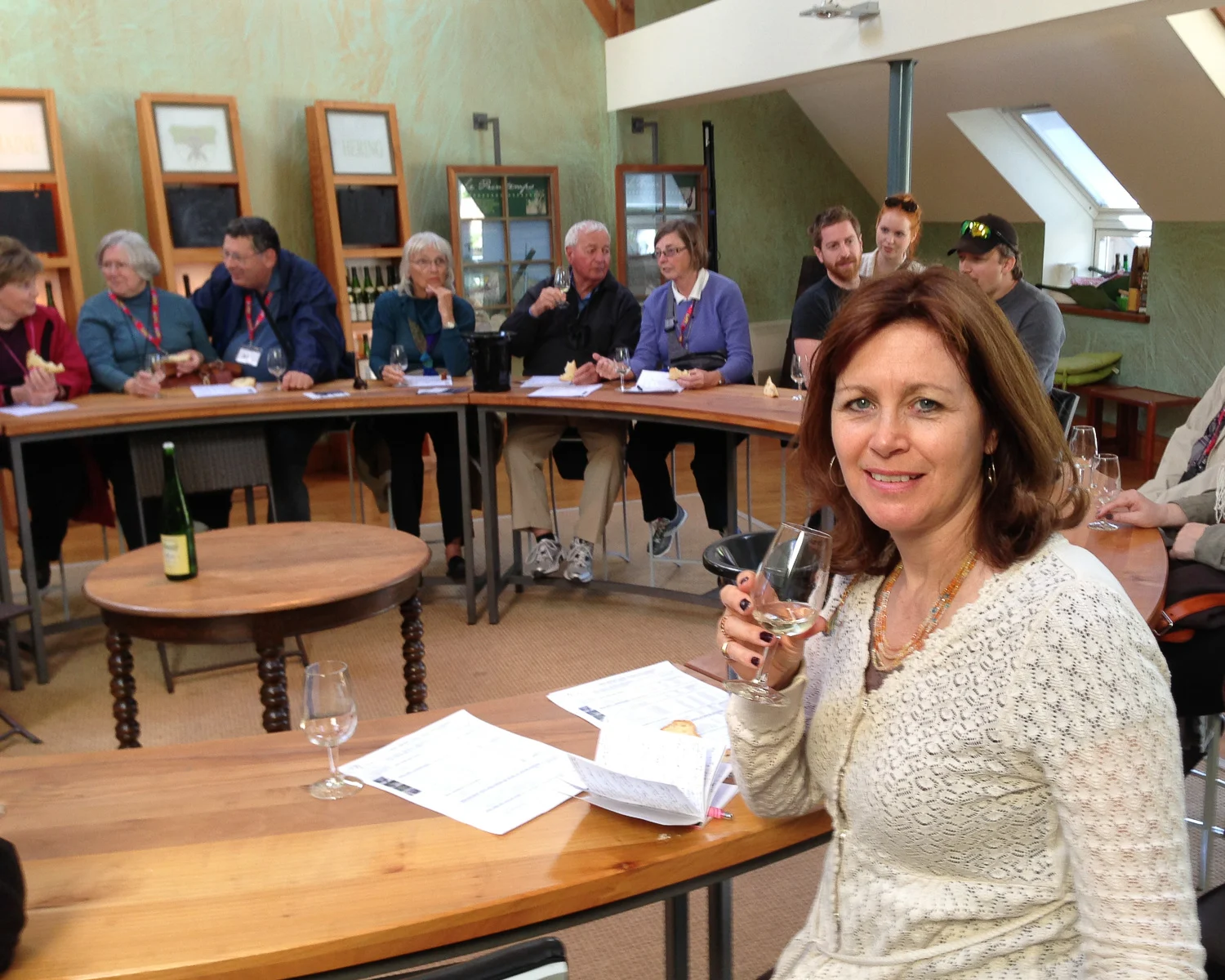
Domaine Hering Wines
Today we were fortunate to be in the village of Barr to meet with Jean-Daniel and Fabienne Héring, “vignerons a Barr depuis 1858” . The Héring family have run their 10 hectare domain for five generations from this pretty village. The winery is situated in the foothills of the Vosges mountains, where the vineyards take maximum advantage of their south east exposure to the sun.
Domaine Hering produces mainly white wines, which are great companions for all types of gastronomic Alsace specialties. The grapes grown here are Sylvaner, Auxerrois, Pinot Noir, Pinot Blanc, Muscat, Riesling, and Gewürztraminer. A blend of white grapes is used to create the sparkling Cremant d’Alsace, which is as good as Champagne and half the price!
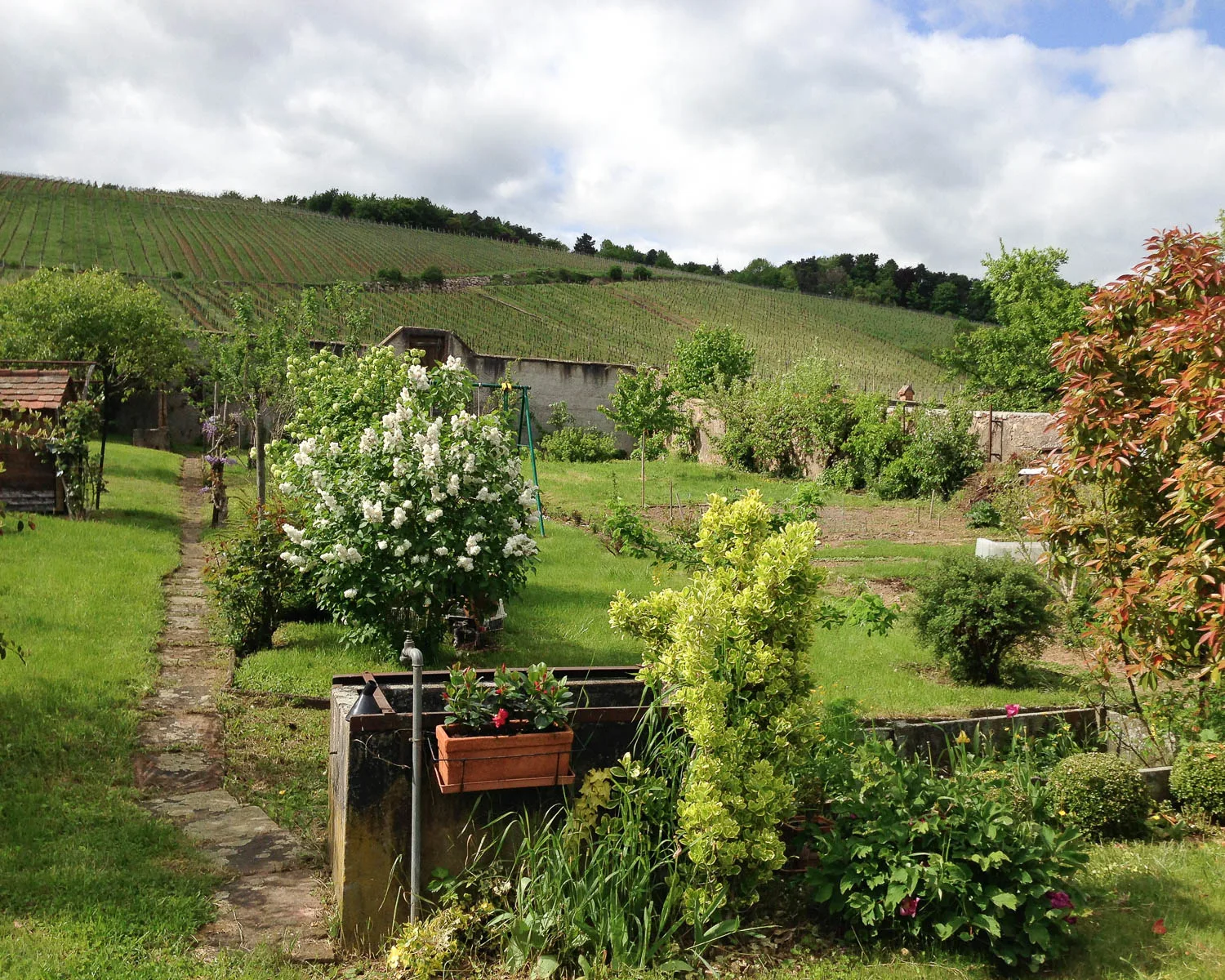
Learning about wine-making
There was a tangible sense of balance and purpose in the courtyard as we learned about the wine-making process, with the vines rustling in the gentle breeze on the slopes of the Kirchberg above us.
I was not surprised to hear that the grapes are handpicked to preserve their integrity and quality over a five week harvest and that the pressing is gentle so that the seeds don’t get crushed and affect the taste.
The decision to become completely organic was taken in 2011. A natural fermentation without the use of artificial yeast is used.
This maintains the link to the terroir, the sense of soil, nature, appellation and human activity in harmony. We descend the narrow wooden stairs to the chilly cellar that dates back to 1652 where the wines are aged for between 6 to 10 months in oak and stainless steel tanks.
The Tasting Room at Domaine Hering
And so to the tasting room, where we found a light and airy space. There were wonderful views of the family Grand Crus Riesling and Pinot Gris vines on the Kirchberg hill.
Baskets of Kugelhopf, a delicious local Brioche with raisins were available to accompany the tasting and clean the palate. There was a spittoon that didn’t get much use from our party, who were, after all, on holiday!
Fabienne invited us to sit down around a semi-circular table in the tasting room. I noticed the quotation from Baudelaire, profondes joies du vin, qui ne vous a connues?, beautifully hand painted on one wall.
We failed to agree a translation but we sort of agreed on knowing the profound joys of wine. This resonated with me and perfectly summed up what the Herings have been doing so successfully here for so many years.
Wine Tasting at Domaine Hering
Fabienne explained that we will taste three wines today; a Sylvaner, a Grand Cru Riesling and a Grand Cru Gewürztraminer. She showed us how to hold the glass by the stem so as not to warm the wine. Then we learned about the importance of colour ( the darker the more sugar).
We all sniffed the wine to get the first nose before expertly swirling to add oxygen. This releases even more aromatic aromas for the second nose. Next we slurped and swished the wine around the palate. It’s serious stuff but we all chuckled anyway.
Grape types in the Alsace Region
Riesling is the most important wine in Alsace. However, I enjoyed tasting the less well known Sylvaner grape which is more of a daily pleasure. It’s dry, light and easy to drink with simple dishes and summer picnics. Also, it’s perfect for the popular French cocktail Kir, (white wine with blackcurrant liqueur).
We discovered that Sylvaner grapes are planted in the northern areas of Alsace. They make a refreshing, easy going wine with grapefruit and lime acidity, but less spiciness than the Riesling. We enjoyed it so much that we ordered Sylvaner again from the wine menu on board the Amadeus Princess.
The Medieval Town of Obernai
After the most enjoyable wine tasting and meander through the wines of Alsace, we continued our excursion to Obernai. This is one of those pretty medieval towns that’s built on the wealth of the wine trade.
We wandered the half timbered street and sat in the market square in front of the statue of St Odile, the patron saint of Alsace. Soon it was time to return to our cruise ship and continue our journey down the Rhine. We’ll certainly be looking out for more of these glorious Alsace wines when we get home.
Read Next
Read about all the different places we visited in this article: Rhine River map – plus our 6-day Rhine River cruise itinerary
More Tales from my Rhine River Cruise
All aboard the Amadeus Princess – what to expect from your river cruise ship
Video – The Rudesheim Music Museum – Siegfried’s Mechanical Music Cabinet
My Rhine River Cruise – a week of history, wine and music – podcast
More information about wine tasting on The Alsace Wine Route
Our Alsace Wine tasting and visit to Obernai was a half day excursion organized through our cruise. It included coach travel, tour guide and wine tasting.
The Alsace Wine Route is a 170km trail that runs through the foothills of the Vosges mountains from Marlenheim to Thann. You’ll take in the medieval castles, villages and vineyards of the Alsace wine growing region.
There are many places where you can stop at the vineyards and wine properties to taste the Alsace wine and meet the local wine growers. Throughout the year wine festivals are held in different towns and villages. Find out more about the Alsace Wine Route and the Fêtes du Vin on the Vins D’Alsace website.
We enjoyed the wine tasting at Domaine Hering in Barr. Fnd more information about the public wine tastings and gastronomic events they offer on their website.
For more information about the nearby town of Obernai that was included in this excursion, visit the Obernai Tourism website.
About Lüftner Cruises
Lüftner Cruises specialise in European river cruises on the Rhine, Danube, Rhône and other destinations in Europe, with personal service and Austrian hospitality. We travelled on the Amadeus Princess on a 7 day Classical Rhine Cruise which travelled from Basel to Amsterdam, although we disembarked at Cologne.
My thanks to Lüftner Cruises who hosted* our Rhine River Cruise. My thanks for this Guest Post to my husband Guy, who accompanied me on our Rhine River Cruise.
* More info on my policies page
This article is originally published at Heatheronhertravels.com

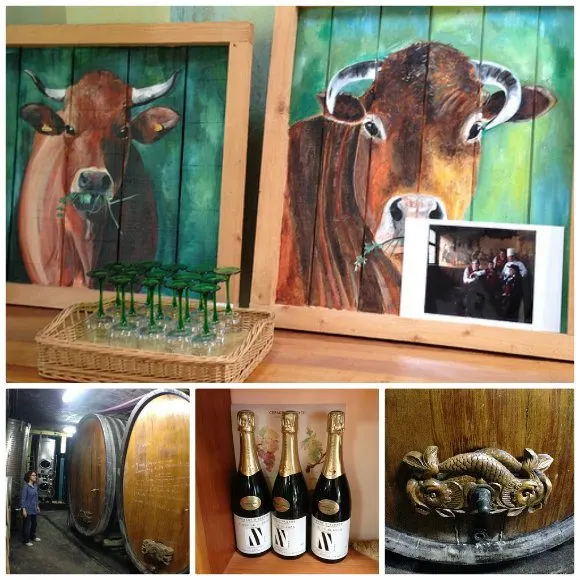
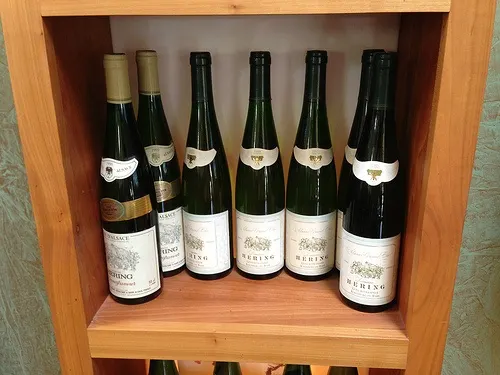
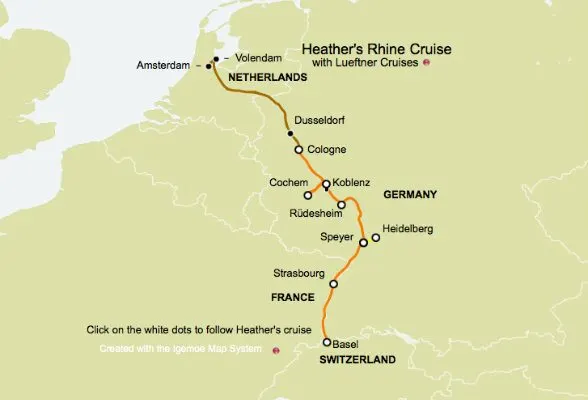

Mark H
Saturday 1st of June 2013
Somehow, Alsace seems so distinctly non-French to me - I guess it has a mix of cultures from it history of being parts of different countries. I love all the old villages and the half-timbered houses. Did you manage to get to Riquewihr, a slice of medieval magic.
Heather Cowper
Saturday 1st of June 2013
@Mark On the whole of our Rhine cruise we moved from Switzerland to France to Germany and it was always a bit difficult to know which country we were in as they felt pretty much the same. Didn't get to Riquewihr but we weren't short of pretty medieval villages